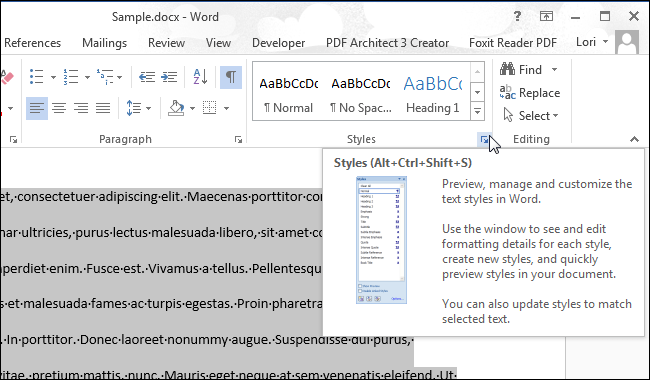

Word displays the Track Changes Options dialog box. In the Tracking group, click the small arrow at the bottom right of the group (it's the one pointing down and to the right).The steps for Word 2013 are slightly different:

Click the down-arrow under the Track Changes tool (in the Tracking group) and then click Change Tracking Options.Make sure the Review tab of the ribbon is displayed.If you'd rather that Word didn't even keep track of formatting changes at all, then you can follow these steps for Word 2007 and Word 2010: With this option turned off, Word still tracks formatting changes behind-the-scenes, but it doesn't display those changes. For example, if you were to copy the text on this page to a Word file, this text would remain bold, and this text would remain blue. Make sure that there is no check mark next to Formatting. When copying text from another document or Internet web page and pasting it into Microsoft Word, Word keeps the formatting of the text. You'll see a list of various items that Word can track and show. First, display the Review tab of the ribbon and click on the Show Markup tool. There are actually a couple of ways you can approach this issue. He wonders if there is a way to have Word not call out the formatting changes and only include all other types of changes, making this approach be the default. Bob finds it very distracting that formatting changes are called-out in the changes list. ), and so on.Bob uses Track Changes quite a bit in his documents and finds it very useful-except for one thing.Just know that selecting all will clear every other formatting like Bold, Italic, bullets ( If you want to remove heading styles from the entire document, use Ctrl+A to select all content in the document. Highlight the heading or headings you want to remove the styles from.And applying this style means you are switching from one of the headings to a body text, removing all the heading properties from the text. Then go to Format > Paragraph from the menu. First, on the Mac, position your cursor in the paragraph that has the little black square. Here’s how you remove the paragraph formatting. It is designed to have the same formatting as the body text. To remove the break, you will need to see what formatting is applied to that paragraph. There’s also a style called Normal style. First Option: Apply Normal Paragraph styleĪll the heading styles, Heading 1 through Heading 9, have their own formatting, which you can modify anyway. Without further ado, below are the various ways you can Heading styles also helps if you want to insert an automatic table of Content into your document.ĭespite all these awesome things heading styles can do, you may want to remove it in your Word document for some reason. Things like collapse and expand content under each heading. These styles are very handy as it allows you to applyĬhanges to all your headings at once. Microsoft Word comes with a library of heading styles you can use in your document. After deleting the header content, the header itself will disappear from all your pages. Then select all the content in the header and hit the delete key. Option 2: Clear all the header content to remove the header in WordĪnother way to delete header in Word is to double-click on the header area to make it editable. With Clear Formatting function, you can remove all the formatting on a block of selected text, or a paragraph. This is how you may exit headers in Microsoft Word.


 0 kommentar(er)
0 kommentar(er)
